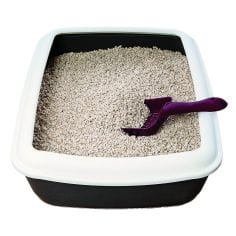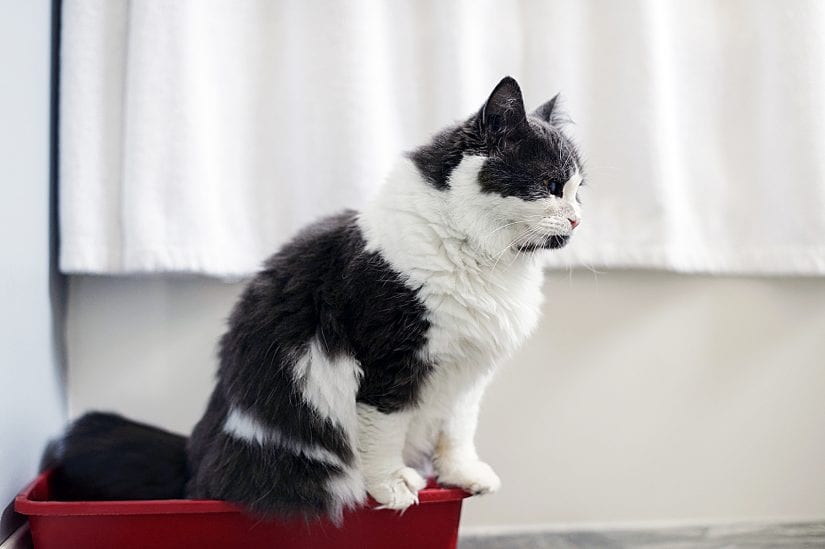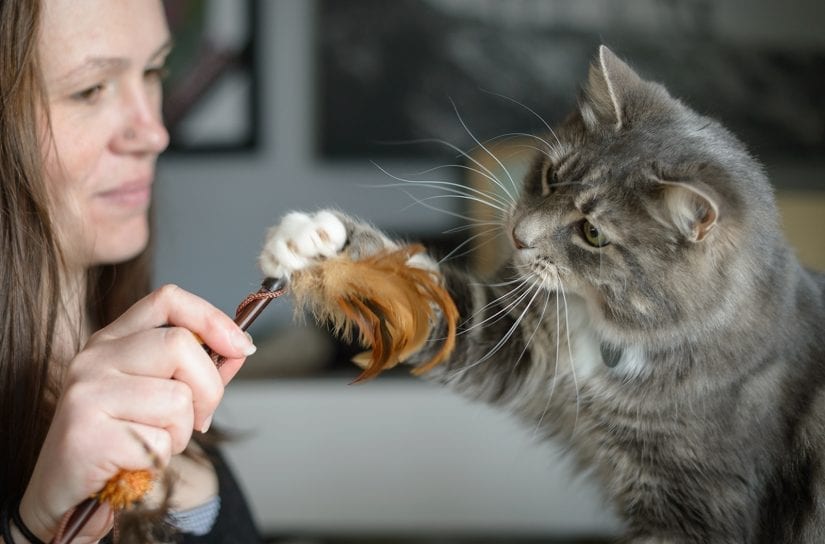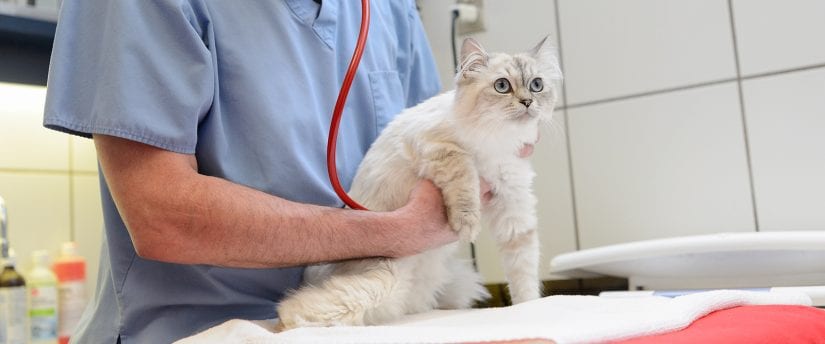Pet care & behaviour
Cats are not born knowing how to use a litter box. Kittens learn about the bathroom from mom. When we give them a plastic box with litter in it we have to teach them to use this as their bathroom.
Pet your cat, give a him a treat or engage in a play session every time he uses the litter box. Never punish your cat or scare him for inappropriate elimination.
Not using a litter box is one of the most common cat behaviour issues guardians deal with. Recognize when there is an issue and try to solve it. Your cat may stop using the litter box for medical, behavioural or emotional reasons.
Steps to litter train (house train) your cat
1.) Location of cat litter box
Put the litter box in a convenient and quiet area for your cat. Make sure the litter box is the right size and type for your cat. The rule of thumb is that a litter box should be one and half times the length of your cat. Go bigger if you’re not sure!
 2.) Type of cat litter
2.) Type of cat litter
Most cats prefer soft small grained litter. Your cat may prefer one litter over another, so when you find what he likes, stick with it. One way to see what he likes is to put several litter boxes out with different litter and let him choose.
If you have multiple cats you should have one litter box per cat, plus one extra.
3.) Take your cat to the litter box
Take him to his litter box after meals and naps until he gets the idea. If his box is in a separate room, put him in the room and close the door after meals and naps.
4.) Use treats to train your cat
Give him a treat after he uses his litter box.
5.) Cleaning your cat’s litter box
Scoop litter box daily and depending on the litter you use wash box every one to two weeks.
6.) No bad cats
If your cat has an accident never yell or hit him. Go back to step one or check out “My cat won’t use the litter box, what should I do?”.
It’s important to remember your cat’s litter box is a big part of her life. Keep it clean so that she enjoys using it. Learn about cat litter box maintenance.
Need more information? Download Litter box problems treating and reducing cat inappropriate elimination (PDF).
Is this new behaviour?
Cats learn where to go to the bathroom and how to cover it as kittens. It’s easy to teach cats to use a litter box because they want to be able to bury their waste. If they stop using their box it’s a concern. They don’t stop out of spite or disinterest; there’s always a reason.
Have you taken your cat to see a vet?
If not, get him checked by a vet, especially if he’s always used his litter box and now he refuses to use it. If so, and if your vet says he’s healthy, ask how you can help your cat or for a referral to a professional.
Try these cat litter box tips:
1.) Location, location, location
Make sure the cat’s litter box is in a quiet location. Place it in a corner where no one can surprise or scare him and somewhere that isn’t busy. Keep it away from his food.

2.) Size does matter
What size is the right size litter box for your cat? Rule of thumb is litter box should be one and a half times longer than your cat. Go bigger if you’re not sure!
3.) Type of box
Think of what your cat needs, not what you prefer. A covered litter box holds the smell in, but this could prevent the cat from using his box. Boxes with high sides might be too difficult for older cats to get into or out of. Self-cleaning boxes might be too scary for some cats. And some cats don’t like plastic liners. A simple box at least four inches deep, the right length for your cat and without a cover is ideal.
4.) How many boxes
If you have more than one cat you should have a box for every cat, plus one extra.
5. ) Litter type
Try different types of litter to see what your cat likes. Put four litter boxes out with different types of litter and see which one he chooses most often. Try different amounts of litter in the box, as some like deep litter while others might not. Stop using the freshener you’ve been using and when you find a litter he likes, stick with it.
6.) Clean it
For many cats a clean litter box is important. Try scooping it twice a day and cleaning it once a week. Some cats may not use it if there’s anything in it.
7.) No bad cats
Remember, you may think your cat is being bad and doing it on purpose. This isn’t true! There is always a reason why your cat is missing the mark. Find out why and help him, never yell or spank your cat.
Find more on litter box issues in our fact sheet Litter box problems treating and reducing cat inappropriate elimination (PDF) and in this video on how to get your cat used to their litter box.


